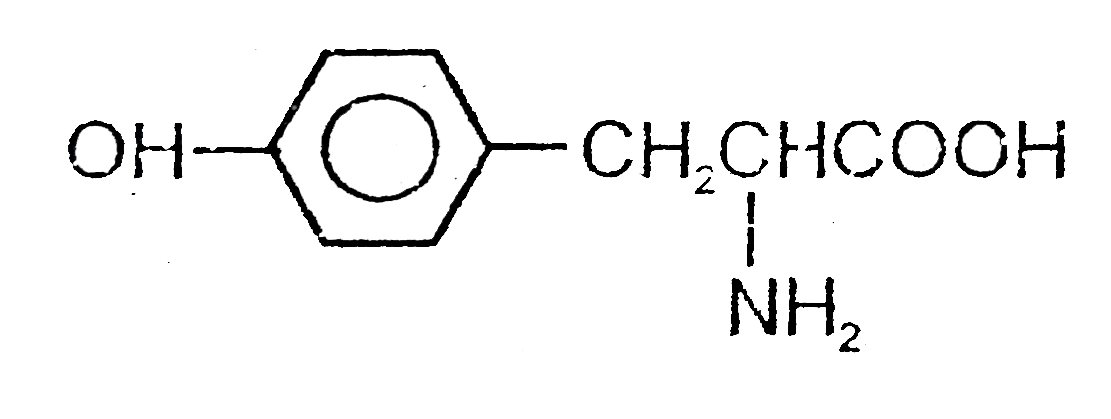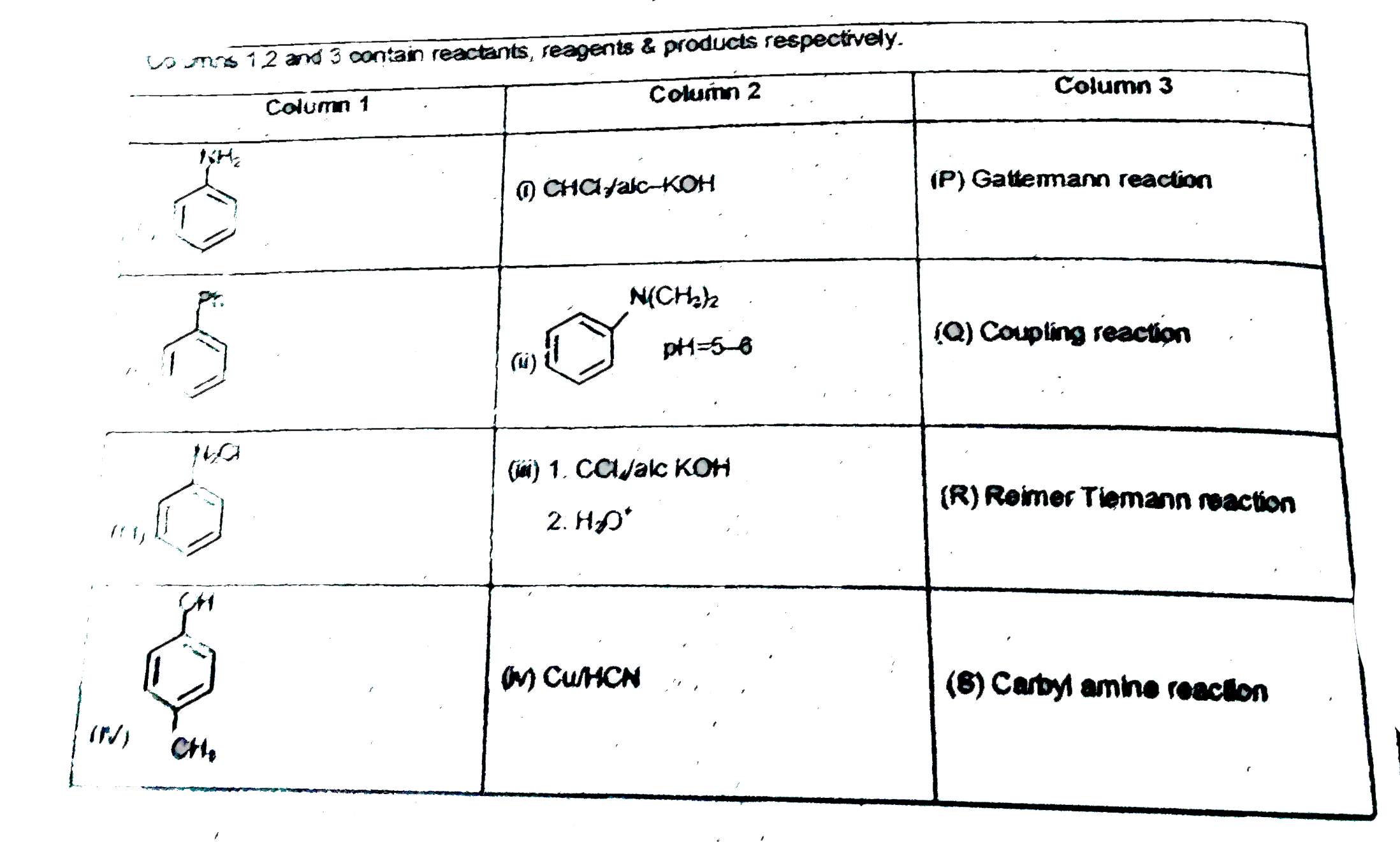Tyrosine is an α−amino carboxylic acid shown below :

(a) In it's cationic form
(b) In it's anionic form
( c) In it's dianionic form
(d) In it's Zwitterionic form.
The correct Answer is:(##RESORGCHMV02XIIC04E01038_A01##)
The following reaction are
Topper's Solved these Questions
- BOOK - RESONANCECHAPTER - BIOMOLECULESEXERCISE - Ex-1(sec-C)Part-I5videos
BIOMOLECULES
- BOOK - RESONANCECHAPTER - BIOMOLECULESEXERCISE - Ex-1(sec-A)Part-II17videos
BIOMOLECULES
- BOOK - RESONANCECHAPTER - BIOMOLECULESEXERCISE - Ex-1(sec-A)Part-I10videos
BIOMOLECULES
- BOOK - RESONANCECHAPTER - BASIC CONCEPTSEXERCISE - ORGANIC CHEMISTRY(BASIC CONCEPTS)27videos
BASIC CONCEPTS
- BOOK - RESONANCECHAPTER - BIOMOLECULES & POLYMEREXERCISE - ORGANIC CHEMISTRY(Biomolecules & Polymer)33videos
BIOMOLECULES & POLYMER
Similar Questions
Knowledge Check
- Question 1 - Select One
Diazomethane reacts with carboxylic acids to form
AAminesBMethyl estersCAlcoholsDAldehydes - Question 2 - Select One
Cation and anions are formed in
AheterolysisBhomolysisCSN2 reactionDE2 reaction - Question 3 - Select One

The only correct combination in which carboxylic acid is formed.A(II)(i)(R)B(II)(iii)(P)C(IV)(iii)RD(III)(i)(P)
Amino acids on treating with Ninhydrin forms
View SolutionEvery amino acids has a carboxyl group and an amino and each group can exist ian acidic form or a basic form depending on the pH of the solution in which the amino acid is dissolved. The carboxyl groups of the amino acids have pka values of approximately 2, the protonated amino group have pka values neare 9. therefore, in a very acidic solutions (pH near zero), both the groups will be in their acidic forms. At a pH of 7 (which is greater than the pka of the protonated amino group), the carboxyl group will be in its basic form and the amino group will be in its acidic form. in a strongly basic solution (say pH=11) both the groups will be in the basic form. R−CH2∣NH2−O∣∣C−OH(neutral not isolated)H+⇐⇒R−CH∣+NH3−OH(A)⇔R−C+∣NH3−O∣∣C−O−(B)+H+⇔R−CH∣NH2−O∣∣C−O(C)
Form A (cationic ) of an amino group exists inView SolutionEvery amino acids has a carboxyl group and an amino and each group can exist ian acidic form or a basic form depending on the pH of the solution in which the amino acid is dissolved. The carboxyl groups of the amino acids have pka values of approximately 2, the protonated amino group have pka values neare 9. therefore, in a very acidic solutions (pH near zero), both the groups will be in their acidic forms. At a pH of 7 (which is greater than the pka of the protonated amino group), the carboxyl group will be in its basic form and the amino group will be in its acidic form. in a strongly basic solution (say pH=11) both the groups will be in the basic form. R−CH2∣NH2−O∣∣C−OH(neutral not isolated)H+⇐⇒R−CH∣+NH3−OH(A)⇔R−C+∣NH3−O∣∣C−O−(B)+H+⇔R−CH∣NH2−O∣∣C−O(C)
For C(anionic) of an amino acid exists inView SolutionAssertion (A) Amino acids react with acid and base both.
Reason ( R) In Zwitterionic form, amino acids show the amphoteric behaviour.View SolutionThe cations and anions are arranged n alternate form in:
View Solution

